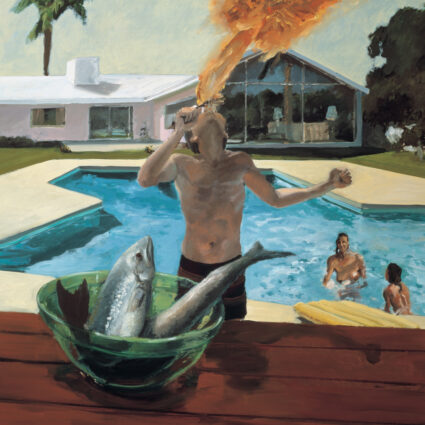Albuquerque-based Benjamin Winans’s sculptural works contend with the impact of Christian nationalism within national memory and the artist’s own lived experience.

Albuquerque | benjaminwinans.com | @benwinans
Benjamin Winans takes an interdisciplinary approach to explore both the personal and the historical implications of his Southern upbringing. Born in Raleigh, North Carolina, his scholarly methodology incorporates drawing, sculpture, installation, video, audio, and printmaking to contend with the impact of Christian nationalism within national memory and the artist’s own lived experience.
Indeed, his sculptural works recall, in an uncanny way, the patriotic veneer of American war imagery, indicating something corrosive that lurks beneath this familiar facade. In Reckoning and Reconciliation (2021), for example, a found church pew is combined with wood, a handmade cotton flag, and sumi ink. Its dramatic triangular composition recalls the iconic war photo Raising the Flag on Iwo Jima (1945).
In Communion (2021), another wooden church pew faces a flag hanging from a white wall. The United States flag’s signature blue studded with white stars adorns the upper register of the flag, yet its remainder is pristine white—devoid of its familiar red stripes. This whiteness combined with the thin triangular shroudlike shape the flag takes recalls a Ku Klux Klan hood, its positioning as item of idolatry for the church pew indicating a sinister connection between American religion and violence.

Winans is currently based in Albuquerque and graduated in 2021 with an MFA in visual art from the Stamps School of Art and Design at the University of Michigan where he was the recipient of the Jean Paul Slusser Award. In 2021, Winans was an inaugural Southern Studies Fellow in Arts and Letters in Spartanburg, South Carolina where he collaborated with associate fellow and writer Morgan Thomas on a project exploring the legacies of Christianity, ecological toxicity, and masculinity in the American South.
By deconstructing symbols, rituals, and icons of evangelical Christianity, his work asserts “that the ruin of our once profoundly held beliefs allows for reimagining the future,” according to his artist statement.






